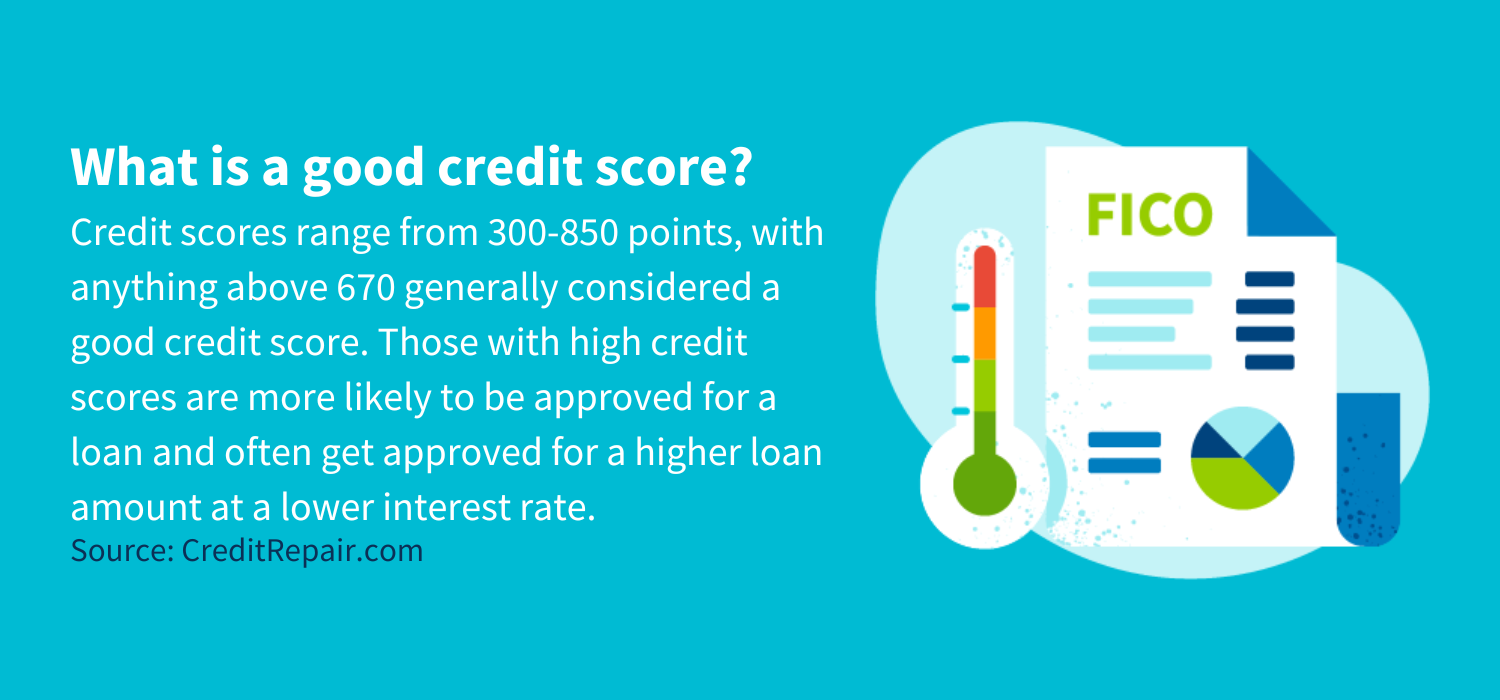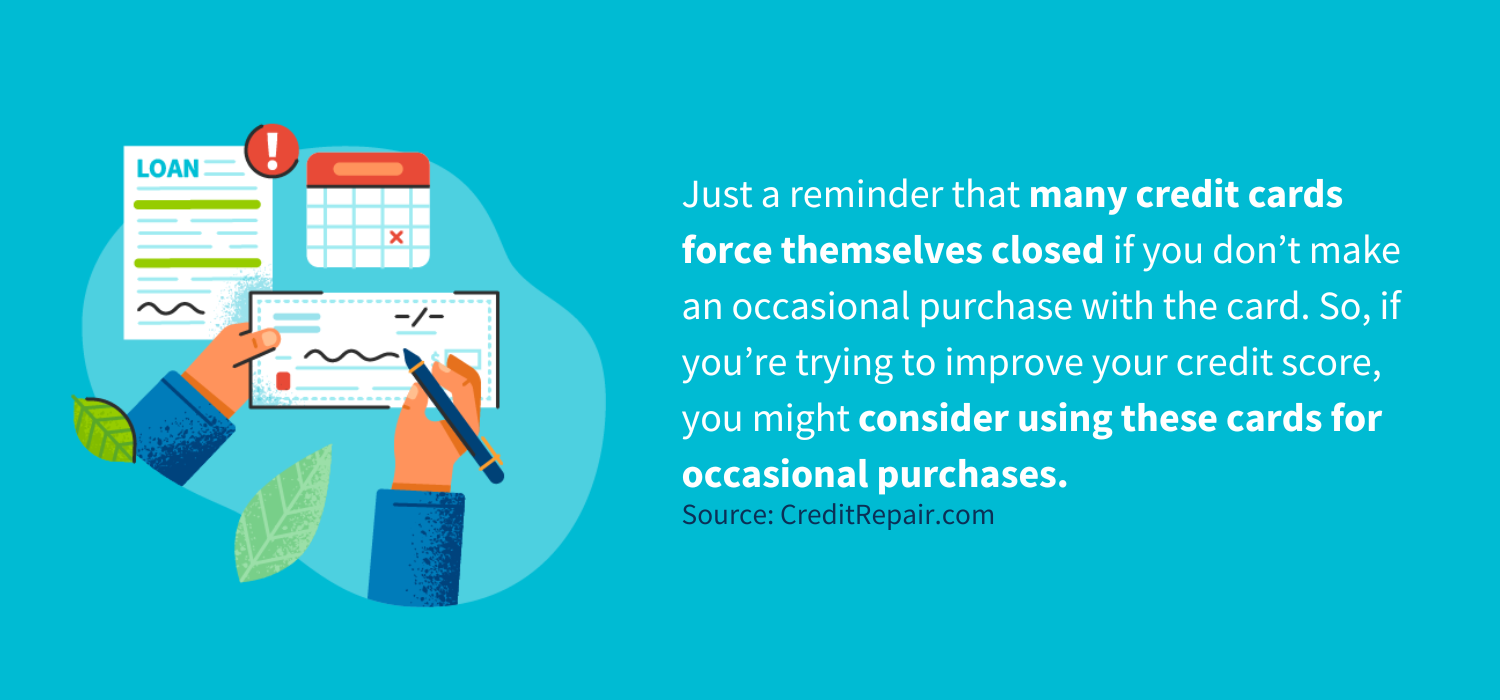
Disclosure regarding our editorial content standards.
Building and maintaining a strong credit score is an important part of modern life. Credit scores are used not just for making major purchases but also often by prospective employers and landlords when they evaluate new applicants. The following article provides educational material on how to protect yourself from negative marks that can ruin your credit score.
What is a credit score?
Credit is the act of buying something of value now and promising to pay for it later. Your credit report shows your history of making credit promises and how responsible you’ve been in paying off those obligations. The credit report shows a lot of complex data, so to make it easier for lenders to make quick credit decisions, the positives and negatives of the report get summarized into a single number called a credit score.
How are credit scores calculated?
Credit scores are calculated by the credit reporting companies, and the exact algorithms they use are kept secret. However, we have a good idea of what the major components of a score are:
- Payment history (35%): The largest factor in a credit score is a reflection on whether you make payments on time.
- Credit utilization (30%): This factor reflects whether your loans have been maxed out. It evaluates the amount of the loan balances you have versus the amount of the loan balances available for use. The lower your credit utilization percentage, the better your credit score will be.
- Credit age (15%): Lenders prefer to see responsible use of credit over a long period, so this factor of a credit score calculates the average age of all accounts on the report.
- Credit mix (10%): Lenders like to see a diverse mix of installment and revolving debt as this gives the lender confidence that the person has a track record of using different types of credit appropriately and responsibly. If you open too many credit cards, there’ll likely be a negative impact on your score.
- Credit inquiries (10%): Every time you ask a lender for new credit, that lender places an inquiry mark on your report. An excessive number of inquiries is seen as risky behavior and lowers your credit score.
What is a good credit score?

Credit scores range from 300-850 points, with anything above 670 generally considered a good credit score. Those with high credit scores are more likely to be approved for a loan and often get approved for a higher loan amount at a lower interest rate.
Six steps to maintaining a good credit score
Now that you have an understanding of what factors make up a credit score, we can look at the steps that can be taken to maximize each of these score components. If you’ve already obtained a great credit score, it’s important to follow the steps below to keep that score high.
1. Pay off your credit balances on time
At 35 percent, payment history is the most important component of the credit score. Any payment made 30 days or more beyond its due date will leave a negative mark against your score, and each missed payment can stay on your credit report for up to seven years. The best way to keep good credit is to never miss a payment. If you do make a mistake and forget a payment, just get your bill caught up before the 30-day period passes.
2. Use as little of your possible revolving credit
At 30 percent of your credit score, credit utilization is almost as important as payment history. This metric measures how much credit you have available at any given time.
For example, let’s say you have a credit card with a $3,000 balance and a $10,000 maximum. Divide the two numbers and you have a credit utilization of 30% on that card. According to the Consumer Financial Protection Bureau (CFPB), “Keeping a low credit utilization ratio—under 30 percent—shows lenders you’re responsible and have available credit.”
3. Keep your old revolving credit accounts open
The credit age factor of credit scores rewards customers who have a long history of responsible credit use. Many customers like to close old credit cards that aren’t in use anymore, but closing an old account can actually lower your credit score because it erases that old account from the age calculation. It’s wiser to leave old accounts open so that they count towards your credit age.
In addition, keeping a zero balance account open also helps lower your credit utilization as you’ll be rewarded for having open credit available.

Just a reminder that many credit cards force themselves closed if you don’t make an occasional purchase with the card. So, if you’re trying to improve your credit score, you might consider using these cards for occasional purchases and then paying them off again right away.
4. Own different types of credit
Lenders feel more comfortable when they see a person who’s demonstrated responsibility across a wide variety of loan types. They want to see evidence that a person can handle not only a credit card but also a mortgage, car loan, student loan, etc. A person who’s wisely used several types of loans is going to score better than a person who owns just one store credit card.
This is one of the reasons it’s a good idea to make large purchases, such as a car, by using credit rather than paying cash if you want to influence your credit score. A person who uses cash for most of their purchases won’t have a strong demonstrated track record of using credit.
5. Apply for new credit sparingly
Every time you apply for a new loan, the lender reviewing your application will grab a copy of your credit report. Every credit card review is recorded on your report as a hard inquiry and counts as a negative mark on your credit score.
When people get into financial trouble, they often begin to apply for more and more loans. If a lender sees an applicant has recently requested several new loans, they may worry that you’re facing financial problems and are less creditworthy.
6. Check your credit report regularly
A study by Consumer Reports revealed that more than a third of the credit reports they examined had some sort of error. In the vast majority of cases, this mistake is a negative mark that’s dragging down that customer’s credit score.
For this reason, the federal government has a law that allows individuals to pull a free copy of their credit report from each credit bureau at least once a year (you can find yours at AnnualCreditReport.com). There are also a wide variety of free and paid services, such as CreditRepair.com, that can let you view your credit report summary .
If you find an error, you have a legal right to file a dispute with the credit bureaus, and they’re required to research and fix the error in a timely manner. Getting an error fixed is one of the easiest ways to quickly remove an invalid negative mark and it could increase your credit score.
Credit reporting is complex, and the impact of having errors on your credit report can be severe. If you find yourself needing expert help, CreditRepair.com has nearly a decade of experience helping customers find and fix credit report errors.
We work with consumers who need help getting a fair, accurate, and substantiated credit report so they have a credit score that accurately represents their credit history.. Sign up today to get a free credit report evaluation, which will include your credit score, credit history and credit repair recommendations.
Note: The information provided on CreditRepair.com does not, and is not intended to, act as legal, financial or credit advice; instead, it is for general informational purposes only.
Questions about credit repair?
Chat with an expert: 1-800-255-0263






